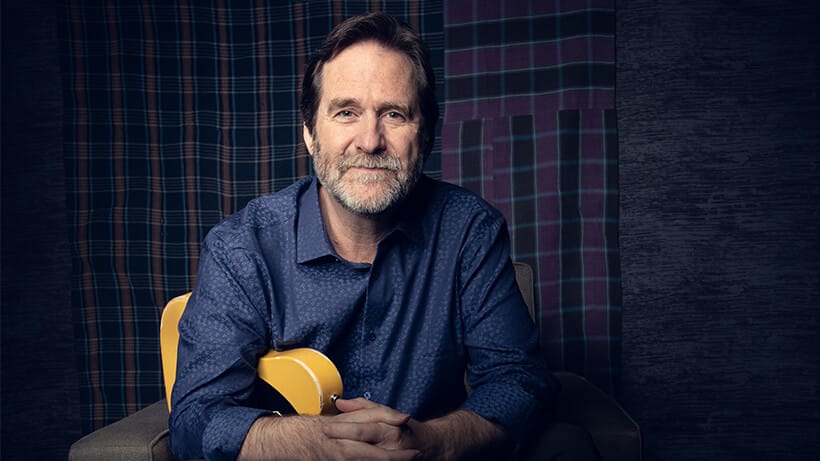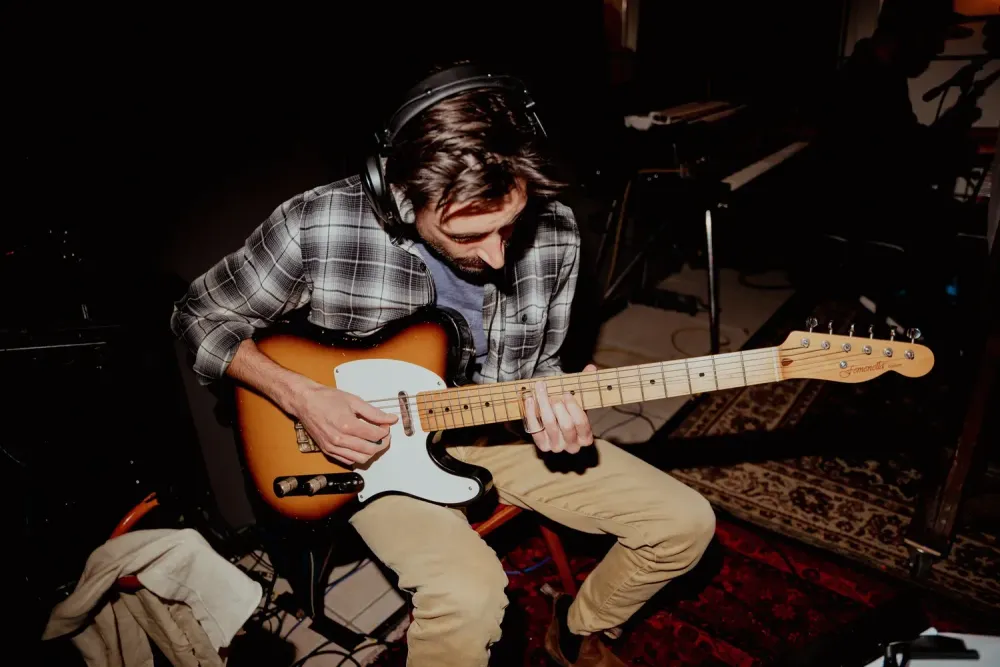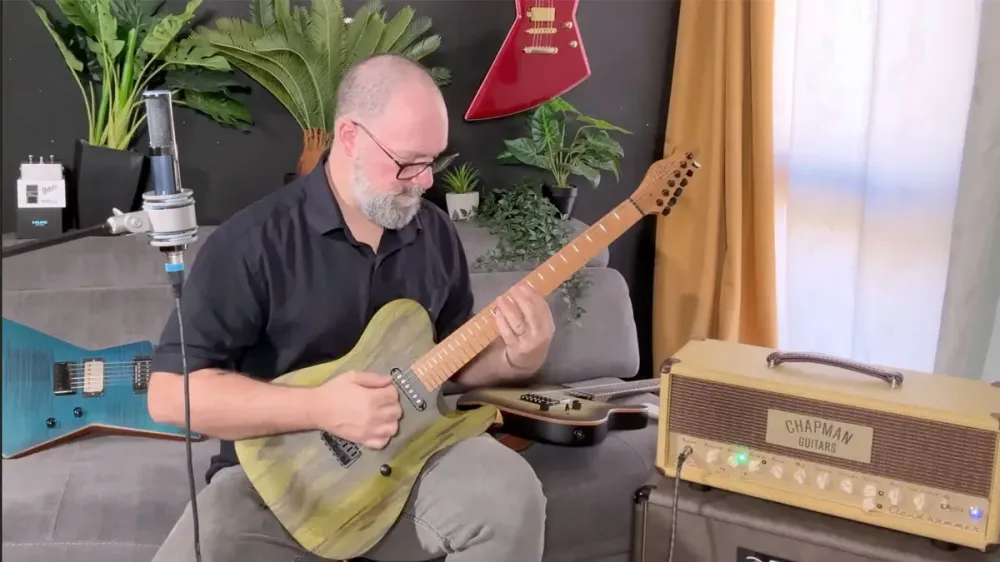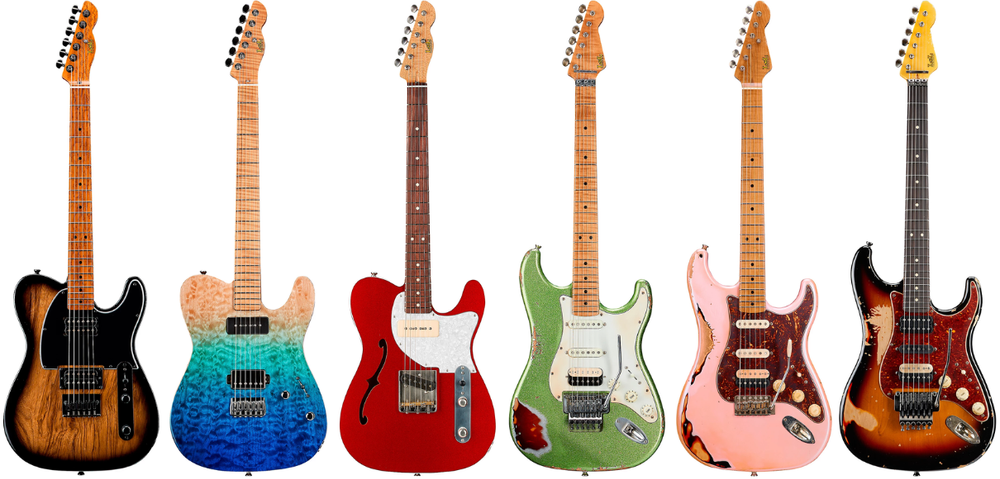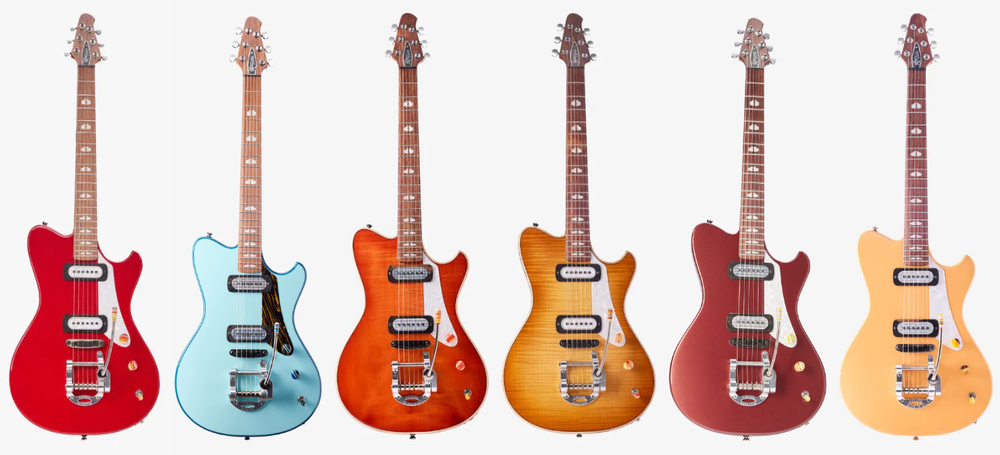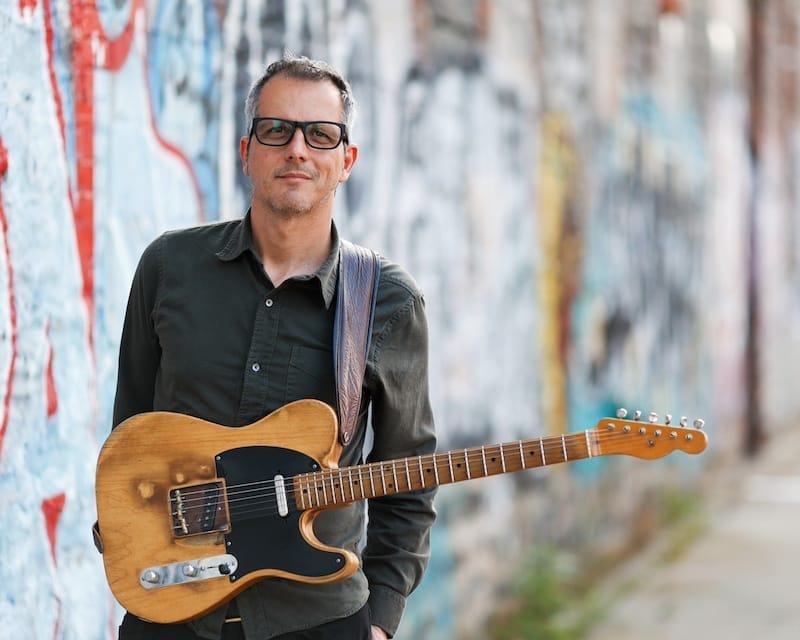
Guitar Practice
The Hexatonic Scale
A hexatonic scale (hexa = meaning, containing six notes) is a major scale where you avoid the 4th note.
Hexatonic melodies were used often by various hard-bop jazz players, including John Coltrane, Joe Pass, Wes Montgomery, Sonny Rollins, and others.
A G major hexatonic scale would be spelled G, A, B, D, E, F#, or the 1, 2, 3, 5, 6, 7 notes of the G Major Scale.
Below, we'll first look at 4 different ways to play a G major hexatonic scale. Then, we'll look at a few riffs based on this scale.
The G Hexatonic Scale in 4 positions

Hexatonic Scale Riffs in G
Riff 1:
This first riff contains and extra chromatic note at the end of the 3rd bar (leading into the 4th bar) with a walk-down from E to D.

Riff 2:

Riff 3:

Tim Lerch on Jazz, a Lifetime of Learning, and why the Telecaster still rules
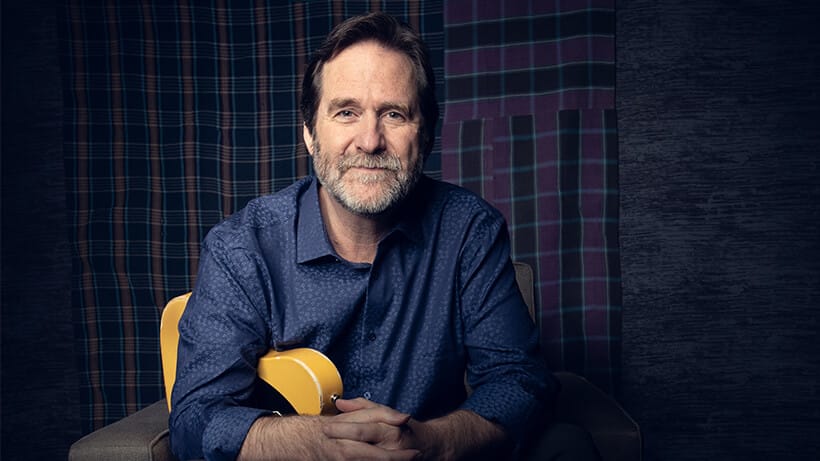
Tim Lerch is a celebrated guitarist, composer, and educator whose playing bridges the worlds of jazz, blues, and fingerstyle guitar. Based in Seattle, he’s known for his soulful tone, elegant chord melodies, and deep command of harmony. Drawing influence from icons like Wes Montgomery, Ted Greene, Joe Pass, B.B. King, and Robben Ford, Lerch has developed a sound that’s both sophisticated and deeply expressive — a seamless blend of jazz intricacy and blues emotion.
Beyond his acclaimed solo work, Lerch performs with the gypsy jazz ensemble Pearl Django, demonstrating his stylistic range and refined musical touch. As an educator, he has reached thousands through his TrueFire courses, workshops, and masterclasses, and now through his own membership website, where he offers lessons, transcriptions, and live sessions that reflect his generous teaching philosophy. His focus on chordal improvisation, melodic solo guitar, and the intersection of blues and jazz has made him one of today’s most respected guitar teachers.
Despite his many achievements — including an Emmy Award for composition — Tim is widely admired for his kindness and accessibility. He remains an active presence in online guitar communities, where he regularly shares advice, insight, and encouragement with players of all levels.
🎸 Q & A
You’ve taught thousands of students online. What do you think most guitar players misunderstand about learning jazz?
Often I feel people think they need to learn “jazz” to learn theory and I think sometimes teachers also make this mistake equating theory with jazz somehow.
The other mistake I find is when a student is curious about learning jazz and then I asked them how much jazz they listen to, and what are some of their favorite jazz performances on record, and they really can’t tell me because they haven’t done that much listening.
Another thing that I noticed is that people want a quick fix and I don’t think jazz is a quick fix kind of music. I think you have to study it long and hard and you have to love the music and put in the time. The final thing is that you need to play with other people as much as you can and as soon as you can. Take your lumps and learn by doing. This is so important.
What’s one concept or exercise you’d recommend to guitarists at any level to improve their musicality?
The main thing is that there isn’t just one concept or exercise that will help you improve. You need to go deep into the style of music that you want to play and you need to learn all of the things that will allow you to play it and understand it.
There are no shortcuts, and if somebody tells you there are shortcuts, you might want to find another opinion.
You’re known for blending jazz sophistication with bluesy soulfulness — how did that mix develop in your playing?
I’ve always just played what I like. I love Blues, Soul, Gospel, Jazz and Classic Country. I’m trying to be authentic and play the kind of music that moves me. I don’t really worry too much about labels or the rules that might suggest “these two things are separate” or” these three things need to be kept apart”. I just play. It’s like a big gumbo. It’s always on my mind and always in my heart so I just play it.
What gear (guitar/amp/pedals) are you favoring lately—and why?
I tend to play Fender telecasters, and a Gibson L7’s. I like small amplifiers that I can get a good sound out of and don’t break my back to pick them up. I use Hendrickson amplifiers, and lately I’ve been using a Fuchs ODH 110 amplifier that is also very very good.
You’ve become well-known for your work with Telecasters in jazz — what do you love about the Tele for this style?
Mostly I’m just really used to how a telecaster feels in my hands. I like the way it feels to the left hand. The scale is comfortable and the radius of the fingerboard is comfortable. I use a traditional 7 1/4 radius on most of my telecasters.
I also like the spread on the right hand, the string spread seems to be comfortable for me to play finger style and since it’s a solid body, I’m not hindered by volume limitations.
I also like that you can sustain certain notes while you move other notes around because that is a hallmark of my approach to playing.
I also really enjoyed the high-end range of the instrument. I can play things up there that are higher than I can reach on an Archtop Guitar. I put a Lollar Charlie Christian pickup in the neck position of my telecaster and I find that gives me a very clear and warm sound that I can enjoy playing clean.
How has teaching shaped your own playing or understanding of music?
When I teach, I learn. it’s always been that way and I really enjoy helping others.
What’s next for you musically—any projects or goals you're working on?
Right now, I’m in the studio with Pearl Django recording our latest record.
Last month I spent a few days in the studio with Adam Levy, and we came up with a beautiful duet album that will be released very soon.
I have two new books that are just about ready to be released. One is a collection of 251 melodic ideas, and the other one is going to be called Melodic Jazz Guitar Soloing and it’ll be emphasizing making melodies rather than playing patterns.
Other than that, I always have a ton of gigs all over the place, private students and making educational videos for my website timsguitarworkshop.com.
Sometimes I even get to take a walk in the neighborhood with my wife.
Gear Showcase
Fender Jaguar & Mustang
This week's gear showcase feature 2 lesser-known Fender guitars - the Jaguar and Mustang.
Fender Jaguar

Known for its distinctive offset body shape and shorter 24-inch scale length, the Fender Jaguar is a unique and versatile guitar.
While it's also offered with humbuckers, most Jaguar models have two single-coil pickups that deliver a bright, cutting tone, and have a complex switching system that allows for a wide range of tonal options.
The shorter scale length makes it easier for people with smaller hands to play, and the floating tremolo system gives it an iconic look and feel that make it a favorite among surf rock, punk, and alternative guitarists (such as Kurt Cobain and Johnny Marr).
Fender offers a variety of Jaguar models at different price points, including through it's budget-friendly Squier line.
Standout Features:
- Typically features single coil pickups that cut through the mix well.
- Shorter 24" scale length.
- Complex switching system featuring eight onboard controls, letting you switch between rhythm and lead tones.
- Floating tremolo system
Fender Mustang

Closely related to the Fender Jaguar is the Fender Mustang.
First released in 1964 as a redesign to Fenders student models, the Duo-Sonic and the Musicmaster, the Mustang features a bit of a more compact body shape than the Jaguar, but also has a shorter 24" scale length.
While its now offered in a few different pickup configurations, The Mustang has historically featured two angled single-coil pickups, each with a 3-way on-off-on switch, and a master tone and volume control.
Standout Features:
- Offset waist body
- Custom single coil pickups that give it a unique sound
- Shorter 24" scale length.
- Available with P90 pickups
Noteworthy 🗞️
- Gibson released a Back to the Future collection featuring both Gibson and Epiphone ES-345 models (along with t-shirts, pick tins & other schwag) to commemorate one of cinema's most iconic guitars.
- Daniel Donato filmed a new rig rundown video with Premier Guitar. Daniel clearly likes to geek out about guitar gear, and has quite an interesting setup.
- Jazz Guitarist Jens Larsen posted a new video featuring 5 jazz guitar exercises that would have saved him years.
- D'Addario released a new video about the great jazz guitarist Julian Lage - The Untold Story of Julian Lage’s Rise to Guitar Greatness.
📺 Watch This
Speaking of Julian Lage, check out this oustanding 9+ minute acoustic improvisation jam between Julian Lage & Jake Workman:
Enjoy this newsletter? Please forward to a friend or hit reply to share your thoughts.🤘
